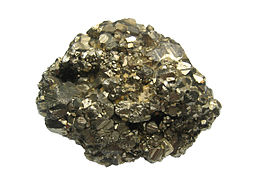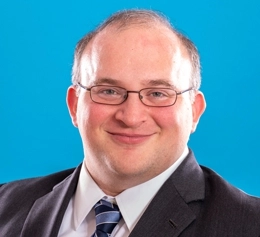 I’m out at IPBC Global this week, and one of the hot topics of conversation here is patent eligibility under § 101. In fact, Director Iancu’s remarks focused heavily on § 101, and the panel I spoke on debated the relative importance of patent quality and patent eligibility. (I argued that patent quality is more important than eligibility; the audience agreed with my side of the argument.)
I’m out at IPBC Global this week, and one of the hot topics of conversation here is patent eligibility under § 101. In fact, Director Iancu’s remarks focused heavily on § 101, and the panel I spoke on debated the relative importance of patent quality and patent eligibility. (I argued that patent quality is more important than eligibility; the audience agreed with my side of the argument.)
As part of this discussion, I’ve heard a few people mention Prof. Adam Mossoff’s “Gold Into Lead” article comparing patent eligibility between the U.S. and other patent offices. Mossoff’s article claims it identified, from a database of 17,000 applications, a set of 1,700 that were allowed in China or Europe, but rejected in the U.S. based on § 101 eligibility issues.
This might be concerning, if there weren’t reasons to have serious questions about the article’s conclusions.
Flawed Data
The U.S. patent system is the gold standard for patent systems worldwide. That’s true today as much as it was in years past—the studies that disagree are themselves based on flawed data.
But some of the applications the USPTOUnited States Patent and Trademark Office. See also PTO. receives are for subject matter that simply doesn’t qualify under U.S. patent law as eligible for patenting. Other patent offices face the same issue—the EPOEuropean Patent Office, which is the operating arm of the European Patent Organisation (also EPO), which is an independent treaty organisation that is not part of the European Union, although there is a substantial overlap in membership. and SIPO in Europe and China respectively both have eligibility standards broadly similar to those of the U.S., and many applications are filed across multiple jurisdictions.
Mossoff’s article claims to have looked at the 17,000 application database and identified 1,700 applications that were allowable in other jurisdictions, but not in the U.S. I haven’t looked at all 1,700 applications; however, Prof. Mossoff chose to include a table of 14 exemplary applications.
The 14 Applications
Here’s the table of 14 patent applications identified in the Mossoff paper.
| Application Number | Application Title |
| US13/829262 | METHODS AND COMPOSITIONS FOR DIAGNOSTIC USE IN CANCER PATIENTS |
| US13/420589 | APPARATUSES AND METHODS FOR USER INTERACTIONS DURING ULTRASOUND IMAGING |
| US12/674875 | METHOD FOR DETECTING GYNECOLOGIC CANCER |
| US12/139753 | METHOD FOR GROWING PLANTS |
| US12/989795 | METHOD OF DETERMINING ALANINE TRANSAMINASE (ALT) ACTIVITY BY 13C-MR DETECTION USING HYPERPOLARISE D 13C-PYRUVATE |
| US12/378965 | METHOD FOR EARLY DETERMINATION OF RECURRENCE AFTER THERAPY FOR PROSTATE CANCER |
| US13/011672 | ANALYTE TESTING METHOD AND SYSTEM FOR TREATING DIABETES RELATED COMPLICATIONS |
| US11/573487 | METHODS AND KIT FOR THE PROGNOSIS OF BREAST CANCER |
| US11/915374 | MEDICAL DEVICE FOR PERITONEAL DIALYSIS |
| US12/679794 | CONTROL APPARATUS AND CONTROL METHOD FOR INTERNAL COMBUSTION ENGINE |
| US13/122967 | DIAGNOSIS OF ACUTE STROKES |
| US13/746180 | METHODS FOR DIAGNOSING AND TREATING PROSTATE AND LUNG CANCER |
Given the focus on medical patent applications, with a very limited subset of non-biotech applications, it seems likely that this set was selected rather than chosen at random. So we would expect that they would present solid evidence for the paper’s thesis—that § 101 is presenting a real barrier to patenting applications in the United States.
So what happened to these applications in the United States that explains why they didn’t become patents here?
The Outcomes
For each of the 14 applications, I examined the prosecutionPatent prosecution is the process of applying for a patent, along with any further proceedings before the USPTO. history. In particular, I looked at the final office action to see what sort of rejections were present at the time of abandonment.
| Application Number | What happened in the USPTOUnited States Patent and Trademark Office. See also PTO.? |
| US13/829262 | Abandoned while facing rejections under 35 U.S.C. §§ 101, 102, 103, and 112 without ever attempting to overcome any of the rejections |
| US13/420589 | Abandoned while facing rejections under 35 U.S.C. §§ 101 and 103, after the applicant failed to convince the examiner the claims were not obvious under § 103 during an interview. |
| US12/674875 | Abandoned while facing rejection under 35 U.S.C. §§ 101 and 112. The examiner provided a suggested amendment that would have overcome the rejections, which the applicant chose not to take. |
| US12/139753 | Application abandoned after a rejection over 35 U.S.C. §§ 102 and 103.
This application never, at any point in prosecutionPatent prosecution is the process of applying for a patent, along with any further proceedings before the USPTO., received a patentableEligible to be patented. To be patent-eligible, an invention must fall into the categories listed in 35 U.S.C. § 101 (i.e., process, machine, manufacture, or composition of matter) and cannot be an abstract idea or a law of nature. subject matter eligibility rejection. It is unclear why the authors included it. |
| US12/989795 | Abandoned while facing rejections under 35 U.S.C. §§ 101 and 103. |
| US12/378965 | Abandoned while facing rejections under 35 U.S.C. §§ 101. |
| US13/011672 | Abandoned after a single rejection under 35 U.S.C. §§ 101 and 112, without any attempt to overcome either. |
| US11/573487 | Abandoned while facing rejection under 35 U.S.C. § 101 and extensive rejections under § 112. |
| US11/915374 | Abandoned in favor of pursuing a continuationA second application for the same invention claimed in a prior nonprovisional application and filed before the first application becomes abandoned or granted. Continuations are unique to the U.S. and are criticized for giving applicants endless opportunity to wear down patent examiners. See Lemley and Moore, Ending the Abuse of Continuation Practice. application on substantially similar subject matter, which is still being prosecuted. In the continuationA second application for the same invention claimed in a prior nonprovisional application and filed before the first application becomes abandoned or granted. Continuations are unique to the U.S. and are criticized for giving applicants endless opportunity to wear down patent examiners. See Lemley and Moore, Ending the Abuse of Continuation Practice. patent, all rejections under § 101 have been overcome. |
| US12/679794 | Abandoned after a single rejection under 35 U.S.C. §§ 101, 103. and 112, without any attempt to overcome the rejection. The § 101 rejection was minimal in comparison to the extensive art of record. |
| US13/122967 | Abandoned while facing rejection under 35 U.S.C. §§ 101 and 112. |
| US13/746180 | Abandoned while facing rejection under 35 U.S.C. §§ 103 and 112.
Previous rejections under § 101 had been overcome by the time of abandonment. |
Sifting through these exemplary patents, it’s clear that it’s effectively impossible to say that they were abandoned because of patent eligibility rejections under § 101 in all but one instance. Of the patents that were also rejected over prior artPrior art is the knowledge in the field of a patent that was publicly available before the patent was filed., the identified prior artPrior art is the knowledge in the field of a patent that was publicly available before the patent was filed. was often art that the European or Chinese patent offices had failed to locate; the USPTOUnited States Patent and Trademark Office. See also PTO. was simply better at locating relevant prior artPrior art is the knowledge in the field of a patent that was publicly available before the patent was filed. and that’s a reason why applicants likely abandoned.
And in fact, there were three times as many patents where § 101 was not at issue at all at the time of abandonment as there were patents where § 101 can be identified as the reason for abandonment.
All of this in a set of 14 applications that appear to have been hand-picked examples.
The Meaning
Applications are abandoned for any number of reasons.
When you see a rejection containing serious issues of noveltyA requirement for patentability, based on 35 U.S.C. § 102(a) of the Patent Act. An invention cannot have been disclosed, offered for sale, or used publicly more than a year before seeking a patent. and obviousness under § 102 and § 103, as well as a rejection under § 101, it’s erroneous to assume that § 101 was the reason for abandonment without further knowledge of the client’s interests and instructions to the attorney. Even when facing only rejections under § 112 and § 101, assuming that § 101 was the cause of abandonment is not a safe assumption. As Patent Progress has covered in the past, it’s more likely an applicant is able to overcome a § 101 rejection than to be unable to do so.
Applications are abandoned for any number of reasons. The better explanation for many abandonments is the worry that the prior artPrior art is the knowledge in the field of a patent that was publicly available before the patent was filed. would be impossible to overcome while still obtaining a meaningful, valuable patent. As a patent prosecutor, I even had clients decide to abandon applications after they had been allowed. Even after paying to get their application to the point where it could issue as a patent, applicants may decide that the patent doesn’t represent enough value to overcome the issue and maintenance feesFees for maintaining in force a patent based on an application filed on or after December 12, 1980. See MPEP 2500 for more. they would have to pay. When applicants are willing to abandon in that type of situation, it should be unsurprising when they abandon applications faced with strong prior artPrior art is the knowledge in the field of a patent that was publicly available before the patent was filed. rejections.
In that light, abandonments after a single rejection (as seen in several of the exemplary applications) look far less like an inability to patent over § 101 and far more like a lack of desire to pursue that particular invention. And abandonments in the face of multiple reasons for rejection do not present a case that can be fairly characterized as abandonment due to eligibility concerns.
Pyrite Patents
When we talk about patents, we think of the “golden” ones—the original patents on transistors or on drugs to cure hepatitis, on new compression techniques for improving communications or on new surgical techniques to correct spinal defects. And we know there’s some “lead” out there: the applications that try to claim old ideas as new, or that try to claim ideas that the inventor never actually came up with, or that claim things that simply aren’t what we choose to allow patents on.
Mossoff’s article tried to sift through patent applications in the U.S. in search of gold incorrectly turned down as lead. Unfortunately, the article seems to have mostly found pyrite, a mineral also known as ‘fool’s gold’ for its superficial similarity to gold—and for the lack of actual gold in the rock.

